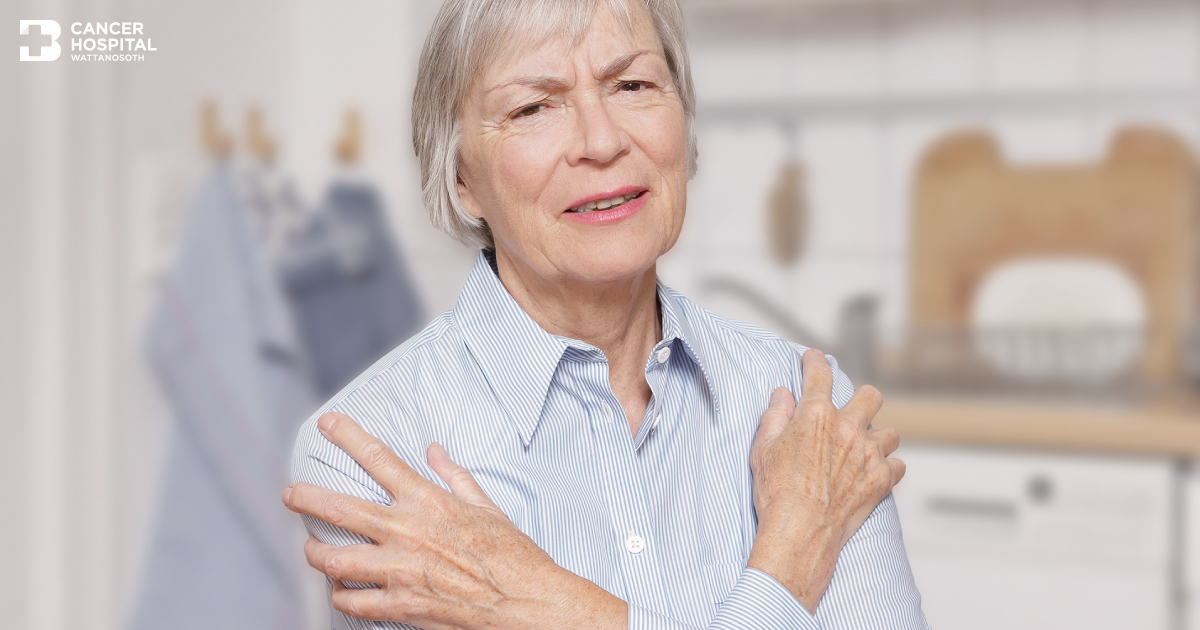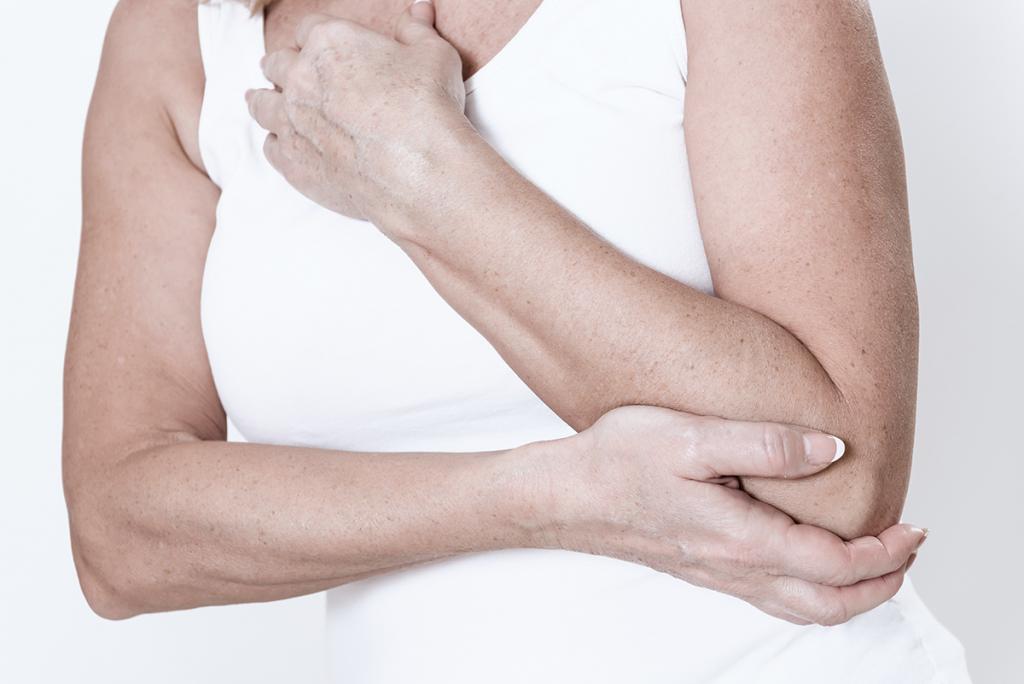
Understanding lymphedema related to breast cancer treatments
The lymph nodes under the arm, called the axillary lymph nodes drain the lymphatic vessels from the upper arms, most of the breast, chest, neck and underarm area. Lymphedema defined as an abnormal swelling of tissue happens when excessive lymph fluid collects in an affected area of the body as a result of lymphatic flow disruption. Lymphedema is a complication that may occur after breast cancer surgery when lymph nodes are damaged or removed. In addition, radiation therapy can cause scar formation and lymphatic blockages that substantially increase the risk of lymphedema. Owning to the fact that it is an unpredictable complication, this condition can occur anytime, varying from days to months or years after breast cancer treatments. In fact, women treated for breast cancer are facing a life-time risk of developing lymphedema with a wide range of incidence. Despite no definite way to prevent this condition from happening, being aware of lymphedema enables the patients to seek immediate medical assistance once abnormal signs arise. Appropriate treatment conducted in a timely manner can greatly lower the risk of infections and other serious complications that might further develop.
Get to know lymphedema related to breast cancer treatments
The lymph nodes under the arm, called the axillary lymph nodes drain the lymphatic vessels from the upper arms, most of the breast, chest, neck and underarm area. Lymphedema is defined as an abnormal swelling of tissue caused by a build-up of lymph fluid in the body. Some patients develop lymphedema after breast cancer surgery and/or radiation therapy. During breast cancer surgery, nearby lymph nodes are often removed from under the arm (sentinel lymph node biopsy and axillary lymph node dissection). This may disrupt the flow of lymph, leading to swelling caused by a build-up of lymphatic fluid in the tissue. In addition, radiation treatments given to the under arm lymph nodes can cause scar formation and lymphatic blockages that further increase the risk of lymphedema. Lymphedema may occur right away after surgery or radiation or even years later. The swelling commonly affects the whole arm, including the hand and fingers. Nevertheless, it only affects the side of the body that was previously treated. A mild type of lymphedema might not interfere with daily life whereas advanced lymphedema can largely limit activities and impair patient’s quality of life. If it is left untreated, serious and chronic complications including infection and sepsis might potentially develop.
Causes of lymphedema related to breast cancer treatments
- Lymph node removal surgery: As part of breast cancer surgery, some patients have at least two or three lymph nodes removed from under the arm. Clinical studies reveal that having underarm lymph nodes removed significantly increases the chance of developing lymphedema. The risk of lymphedema is correlatively multiplied with the number of nodes taken out. Particularly, scarring caused by nearby tissue damages can lead to lymphatic obstruction which impedes the lymph flow, causing swelling arm.
- Radiation treatment to the lymph nodes under the arm or in the breast: Radiation can induce scar formation in the lymph nodes and lymphatic ducts, resulting in lymphatic obstruction in the arm or breast. If the patients underwent both breast surgery and radiation treatment, the risk of lymphedema extensively increases compared to those who received single treatment.
- Infection or injury in the arm: Infection and injury can lead to tissue inflammation, which in turn makes the lymphatic system work even harder. In an inflamed area, blood flow and fluid load increase and trigger lymphedema. Once the infection in the arm has developed, it is unlikely to ever completely go away.
- Recurrence of cancer: In case that cancer recurs, the malignant tumor might spread and obstruct lymph flow, leading to swelling of the arm.

Symptom of lymphedema
Symptoms of lymphedema related to breast cancer treatments include:
- Arm swelling
- Pain, numbness and weakness
- Arm stiffness affecting range of motion
- discomfort
- Dry skin and skin hardness (fibrosis)
- Feeling of tightness in the arm when wearing usual clothes or accessories
Diagnosis of lymphedema
Lymphedema related to breast cancer treatments is likely to arise during the first 6 months after breast surgery/and or radiation. Post treatment follow-up appointments are usually made in order to evaluate any indicative sign of lymphedema. Diagnosis is primarily conducted based on patient’s signs and symptoms and medical history. The most common test is the circumferential measurements taken along the hand, wrist, forearm and upper arm, particularly in the area above the elbow. Other tests usually involve arm volume measurements and imaging tests, such as computerized tomography (CT) and magnetic resonance imaging (MRI). Diagnostic tests for each patient are considered by the expert breast surgeon.
Treatment of lymphedema
Although there is no definite cure for lymphedema, treatments focus on reducing the swelling and preventing other complications. There are two main treatment approaches used to manage lymphedema: conservative and non-surgical treatments.
1. Conservative treatments: Following these recommendations can substantially help to reduce swelling:
- Reducing the risk of arm infection. Small wounds can be disinfected by using alcohol before applying antibiotic cream. In case of larger wounds, seek medical attention as soon as the wounds are noticed. It is highly advised to keep the area clean and moisturize the skin daily to prevent dry and cracked skin.
- Avoiding arm and hand injuries. Blood pressure measurement, injection and blood draw must be strictly performed on the unaffected side of the arm. To prevent hand injuries, wear latex gloves when gardening or cleaning the house.
- Refraining from wearing tight-fitting clothes or accessories on the affected arm. Tight clothes or accessories can compress the affected area and increase arm swelling.
- Preventing muscle injuries. Avoid heavy lifting and performing vigorous activity using the affected arm.
- Avoiding exposure to high temperature, such as bathing, showering and sauna which accumulate more lymph fluid to the affected area.
- Keeping the arm raised. Raising the arm above the level of the heart when sitting for a long period of time to allow gravity help drain the fluid.
- Weight management. Eating a healthy diet and controlling body weight helps to minimize the risk of swelling.
- Wearing a compression garment or elastic bandage. Wrapping the entire limb with compression garment encourages lymph fluid to flow back toward the trunk of the body and prevent the fluid buildup in the arm.
- Manual lymph drainage. Manual lymphatic drainage or manual lymphatic therapy uses light touch to move excess lymph and fluid out of the tissues and move them back into the lymphatic vessels. However, patients should avoid manual lymph drainage if they have a skin infection or active cancer in the affected limb.
- Laser therapy. Some studies have found that laser therapy can help reduce the volume of the arm, decompose scar tissue, while improving range of motion and reducing tightness.
If any sign of lymphedema is notices, contact your breast surgeon or care nurse as soon as possible. Additional investigations might be required, allowing effective treatments given in a timely manner.
2. Surgical treatments: Surgery are often considered in cases where particularly aggressive or advanced lymphedema does not respond to other treatments. Surgical options include:
- Lymphatic bypass surgery (lymphovenous anastomosis): This procedure uses microsurgery to build extremely small connecting routes between the lymphatic vessels and the veins, hence the lymph fluid has a new drainage pathway.
- Lymph node transplant: In this approach, lymph nodes are taken from another part of the body and connected to the lymph vessels and blood vessels under the arm.
- Removal of fibrous and fatty tissues by surgery and liposuction: The body tends to deposit fat in areas of the arm affected by lymphedema. In severe lymphedema, the soft tissues in the limb become fibrous and hardened. Liposuction removes fatty tissues and reduces the volume of the arm, resulting in improved arm function. In some cases, hardened tissue and skin may be surgically removed. However, recurrent lymphedema after liposuction and surgery is possible.
Considered as a common complication, lymphedema can develop anytime after breast cancer surgery and/or radiation. This condition typically presents on the affected arm where breast cancer was previously treated. Nevertheless, in some patients who have breast cancer found in both sides of the breast, lymphedema of both arms might develop in rare circumstances. Applying the same treatment instructions, the less swollen arm should be dominantly used for conducting routine activities. Despite no curative approach, treatments aim at reducing swelling and preventing other complications including infections. In addition, patients need to follow all of the self-care guidelines for reducing risk of lymphedema flare-ups. If any warning symptom presents, medical attention provided by the expert breast surgeon must be sought without delay.